The greatest threat to my health this time of year is … acorns. I travel more than 1,000 miles a month on motorcycles. Most motorcycles have two wheels. When you put a foot down to stop one expects to touch terra firma not tan acorn marbles or slippery acorn bits or a road slick from pulverized acorn powder mixed with oil. Add rain and it’s like stopping on ice. My slip sliding away tells me the local oaks are masting. A mature oak will produce acorns ( a mast) every two years or so. Why acorns are not called oak nuts I have no idea. Acorns are a major staple food but they also require labor and water so while calorie positive they are not the most wild munch for the muscle. Winged yams are. If you have a lot of acorns you might want to consider buying a nut sheller which costs about $150. A sheller shortens shelling from days to hours. Believe me, after you shell a few hundreds acorns by hand $150 looks cheap. To read about acorns you can go here and here. Both articles have related videos on You Tube. (Good thing you read this because saying “sheller shortens shelling” isn’t easy…)
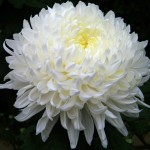 Fact: All native flowers of New Zealand are white. Fact: Between 40 and 50 percent of people cannot smell cyanide (almond/cherry-ish.) Fact: One person in 10 with European ancestry has a gene that makes cilantro taste like soap to them. Fact: Was that a boy spider or a girl spider that just frightened you? You do know how to tell the difference don’t you? Besides eight legs spiders have two little arms near their mouth, easily seen, called pedipalps. He will be wearing boxing gloves on his pedipalps, she won’t.
Fact: All native flowers of New Zealand are white. Fact: Between 40 and 50 percent of people cannot smell cyanide (almond/cherry-ish.) Fact: One person in 10 with European ancestry has a gene that makes cilantro taste like soap to them. Fact: Was that a boy spider or a girl spider that just frightened you? You do know how to tell the difference don’t you? Besides eight legs spiders have two little arms near their mouth, easily seen, called pedipalps. He will be wearing boxing gloves on his pedipalps, she won’t.
New article: Valuable Viburnums.
While you make take comfort in these next two facts the lesson is still the same: Be careful. The mushroom family that causes the most deaths is the Amanita, and most of those deaths are among immigrants to North America who mistake a local deadly with an edible back home. A Connecticut family this past week ate mushrooms growing in their yard — right — sending them to the hospital. The grandmother of the family collected them, cooked them up with onions, garlic and green chili peppers, and all agreed they were tasty. Over the next day they started to get sick. The woman’s oldest daughter, Wafa Guloona, who ate the most mushrooms, was treated by an “experimental” procedure. It helped save her life and reduce her liver damage. That experimental procedure is using Silibinin made from Milk Thistle, a traditional remedy. She was also treated with charcoal. The offending mushrooms have been tentatively identified as Amanita bisporigera, the Destroying Angel, the most toxic mushroom in North America. One mature mushroom can kill an adult. The second lesson is should you find yourself in the situation remember milk thistle and Silibinin. It has been approved for use in Europe for mushroom poisoning but not yet in the United States. The drug blocks the toxins from reaching the liver. The doctor treating the victim had to get special permission to use Silibinin.
Robert Marra, a specialist in mycology at the Connecticut Agricultural Experiment Station, said the only safe attitude is to assume all mushrooms found in the wild are poisonous. “Expert mushroom hunters and even mycologists make mistakes because they fall back on assumptions and make mistakes in identification,” he said. “Stories are legion of famous mycologists who have succumbed because they make little mistakes in identification.” There you have it: Mushroom hunting is a self-correcting profession! (With apologies to all my mushroom-hunting friends. There are a half-a-dozen or so mushrooms that are quite safe to identify and consume.)
Now on to an almost more pleasant topic. It is an odd fact that traps for edible aquatic snails work equally well whether they are baited or not. The next conclusion has to be either there’s something attractive about the traps and or snails are not bright. In my article on the mollusks I mention traps and have had a few folks ask for more specifics. Glad to oblige though there aren’t many. May your snail sequestering be shellful. First get a plastic oil collecting pan from an auto store, a few dollars. Drill or cut a hole in the bottom of the pan to just put through a half inch PVC pipe. You can put some bait in the pan or not, a few bits of lettuce or a crushed minnow or two, and stake the pan to the bottom of a pond or the like with the PVC. You want the top of the pan barely underwater. You might need a brick or the like for ballast to position the open top just under the water. Also staking it in or near grass and other vegetation helps. The snails crawl across the top, drop in, but can’t crawl out, not unlike a lobster pot. While the trap collecting gourmet food you can be doing something else. Efficient.
As the website titles says Eat The Weeds and other things too. Those other things include a wide array of non-a la carte creatures including bugs, worms, jellyfish, armadillos, slugs and snails and puppy dog tails. It’s not that I eat such things all the time as it is having a comprehensive website with quality articles about said. Resource rather than advocacy. It drives traffic and insanities. Have I heard from complaining canine champions? No. Nor equine opines, guinea pig guardians or those who think feline fricassee is felonious. But I have been targeted by turtle lovers leaving me slightly shell shocked. Cooters, sliders, even snappers have their devoted defenders. Rest assured terrified terrapins. I am not a tortoise torturer. Tureen of Turtle is not on my table tonight.
For some reason the Crepis genus just doesn’t make the foraging books although there are many edible species. Cornucopia II mentions two and in a dismissive way, Crepis setosa and Crepis capillaris, both in Italy and used in a minor way in a traditional spring ritual dish called pistic. Gray’s Manual of Botany manages to mention 10 species. Three species were definitely used by native Americans including C. acuminata, C. occidentalis and C. runcinata. Locally we have Crepis Japonica from Asia which is also called False Hawk’s Beard and Youngia japonica. Leaves can be used like dandelions. Some European species are suspected of possibly causing “nervous disorders.” I mention them because while they can grow year round locally they favor cooler weather. I am seeing them more and more on the foraging trail. To read more about the False Hawk’s Beard click here.
While foraging you will often find grape-like fruit. One quick way to dismiss any such fruit as not a grape is to look at the seed. A grape sees is generally shaped like a tear drop, or a drop of water from a faucet, fat on one end, to a point on the other. There can also be a slight valley on the fat end. If the seed has a flat side, or two or more sides that make an angle, it is not a grape. If the seed is shaped like a half moon or a crescent roll it is not a grape. Sorting out which species of grape you have can be a headache but you can eliminate many contenders just by looking at the seed. To read more about grapes, click here.
To donate to the Green Deane Newsletter click here.

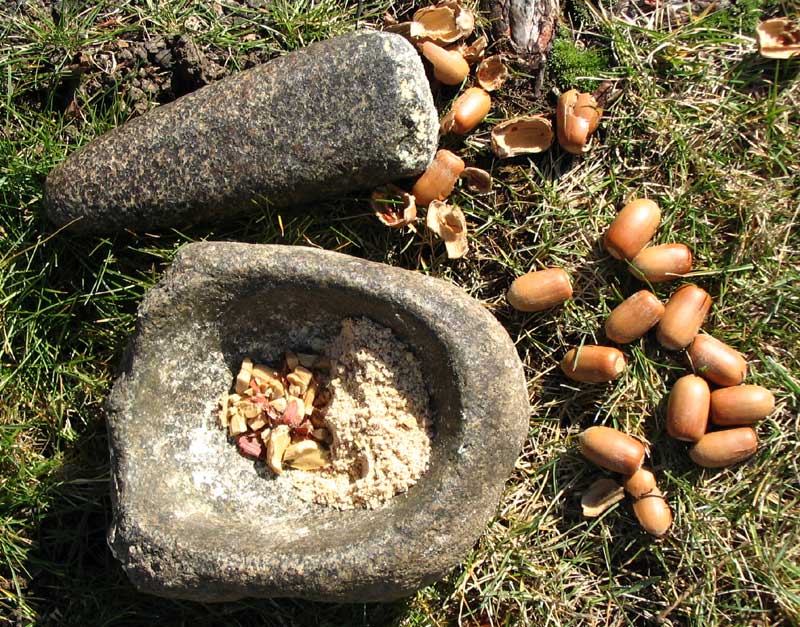
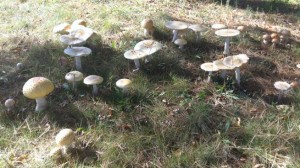
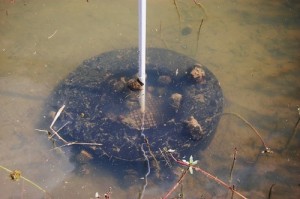
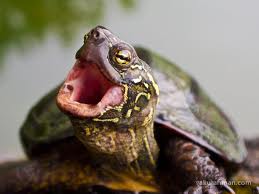
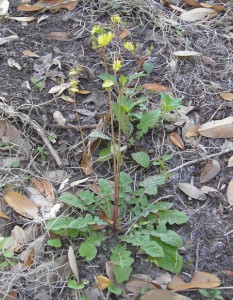
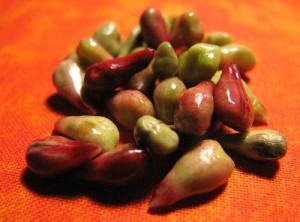

Nice article. My front garden bed is “infested” with False Hawksbeard, it hides under the non edible juniper that is planted there. My favorite way to eat them is pick and eat while working in the yard.
Deane, when talking about turtles, you tend to be terribly tactful.
I don’t think all native flowers in New Zealand are white. One example is the Pohutukawa. It is red.
Pohutukawa is a tree. I said flowers.
Hello,
I am a New Zealander and I can tell you although we have very few flowers we definitely have some that come in colours other than white.
Like someone said above, The Pohutukawa is a tree with green leaves but in summer it is covered with beautiful red flowers. We have another tree called the Kowahi that has lovely yellow flowers. We have a shrub called a Hebe that comes in a wide range of flower colours including a beautiful bright purple. These are just three examples.
That was meant to be Kowhai.
Love reading your neswletters.
For thirty years I have been teaching people in Australia how to identify edible weeds and how to prepare them for use in the kitchen, the garden, the compost bin, as liquid fertilisers, as a healing mulch and for animal fodder.
It’s sad when people are sickened through eating the wronge ‘varieties’!
Judith
where are you based? i’m in the country west of melbourne and wouldn’t mind learning more on some of the local edible weeds.
Melbourne, Australia or Melbourne Florida?
For thirty years I have been teaching people in Australia how to identify edible weeds and how to prepare them for use in the kitchen, the garden, the compost bin, as liquid fertilisers, as a healing mulch and for animal fodder.
It’s sad when people are sickened through eating the wronge ‘varieties’!